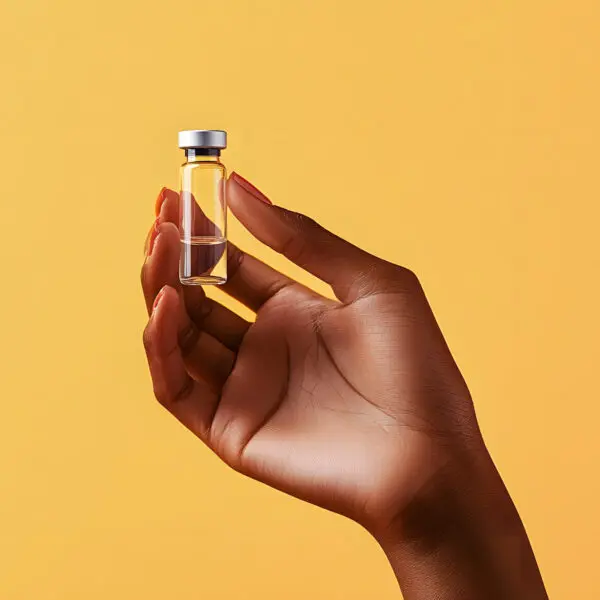I recently came across an interesting article pertaining to skin aging. The photo above is from the article, and represents the essence of aging, but I will mainly address aging as it relates to skin conditions. As we age, we experience the inevitable wrinkles, sagging, age spots, and loss of elasticity. This natural process, known as skin aging, is caused by a combination of intrinsic (genetic) and extrinsic (environmental) factors that degrade the skin’s structure and function over time. However, an exciting area of research is now exploring the potential of stem cell therapy to rejuvenate aging skin and combat the effects of skin aging.
One promising approach involves using mesenchymal stromal cells (MSCs) derived from umbilical cords (UC-MSCs). Unlike some products offered in many offices that may contain dead cells and some growth factors, UC-MSCs are a different breed entirely. These are active, multipotent stem cells with some pluripotent characteristics, meaning they have the potential to develop into various cell types. The beauty of UC-MSCs lies in their accessibility. They are readily obtained from the umbilical cord tissue after births, providing a convenient and ethically sound for potential skin rejuvenation therapies. This article sheds light on these cells’ remarkable ability to promote skin rejuvenation through various mechanisms.
Unlike other types of stem cells, UC-MSCs have low immunogenicity. This means they are less likely to trigger a rejection response from the body’s immune system compared to other types of stem cells. However, like all allogeneic (meaning they come from a different person) cells, they are immune evasive, not immune privileged. While the risk of rejection is lower, there’s still a slight possibility that the body might recognize them as foreign and attack them.
The article outlines several critical mechanisms by which UC-MSCs may counteract skin aging:
- Enhancing Injury Repair: UC-MSCs can migrate to damaged areas of the skin, where there is injury, to promote wound healing. They do this by secreting factors that stimulate angiogenesis (new blood vessel formation) and improve the overall condition of the local tissue.
- Stimulating Skin Regeneration: The secretions of UC-MSCs, such as fibroblast growth factors (FGFs) and vascular endothelial growth factors VEGFs), can stimulate skin cells to multiply and migrate, ultimately leading to increased collagen production and skin regeneration.
- Anti-Inflammatory Effects: UC-MSCs can secrete anti-inflammatory cytokines (tiny proteins produced by cells that send signals to different parts of the body) and regulate immune cell activity. This reduces chronic inflammation and can help with skin aging.
- Antioxidant Properties: These cells can enhance the body’s antioxidant capacity, neutralizing harmful molecules called reactive oxygen species (ROS) that can damage skin cells and contribute to aging.
- Inhibiting Advanced Glycation End-Products (AGEs): As we age, advanced glycation end-products (AGEs) accumulate in the skin, decreasing elasticity and strength. UC-MSCs can protect fibroblasts from the cytotoxic effects of AGEs.
Numerous lab and animal studies are painting a promising picture for the future of skin health. These studies demonstrate the potential that umbilical cord mesenchymal stem cells (UC-MSCs) hold for promoting collagen production, reducing damage caused by oxidative stress, and improving wound healing in aged or damaged skin. The implications of this research for regenerative medicine are far-reaching. UC-MSCs could pave the way for novel cell-based anti-aging therapies and skincare products that harness the regenerative power of these cells. Furthermore, UC-MSCs can be engineered to deliver specific therapeutic molecules, such as growth factors or drugs, directly to target sites, potentially enhancing their regenerative capacity. While more extensive clinical studies are needed to validate the safety and efficacy of UC-MSC therapies, this research represents an exciting frontier in regenerative medicine. By harnessing the rejuvenating power of umbilical cord stem cells, we can unlock new possibilities for combating skin aging, promoting wound healing, and achieving better aesthetic results through innovative cell-based treatments.
Moreover, several clinical trials are currently underway or have been completed to assess the use of UC-MSCs for treating skin disorders like chronic wounds, ulcers, and even skin rejuvenation. While the results are still preliminary, some studies have reported promising outcomes, such as improved wound healing rates and enhanced skin regeneration. In the meantime, PUR-FORM offers several modalities that can achieve similar results. We utilize Platelet-Rich Fibrin (PRF), which concentrates your body’s natural healing factors from your own blood platelets. PRF can be applied topically following treatments like Morpheus8, a microneedling and radiofrequency treatment we offer to stimulate collagen production and improve skin texture, or can be injected for deeper rejuvenation effects. In some cases, carefully placed Bio-filler (similar to PRF) can add volume, smooth wrinkles, and improve facial contours, complementing the results from PRF or Morpheus8. Additionally, we carry the Alastin Skincare line, scientifically formulated with growth factors and peptides that nourish and support the skin’s natural renewal process.














